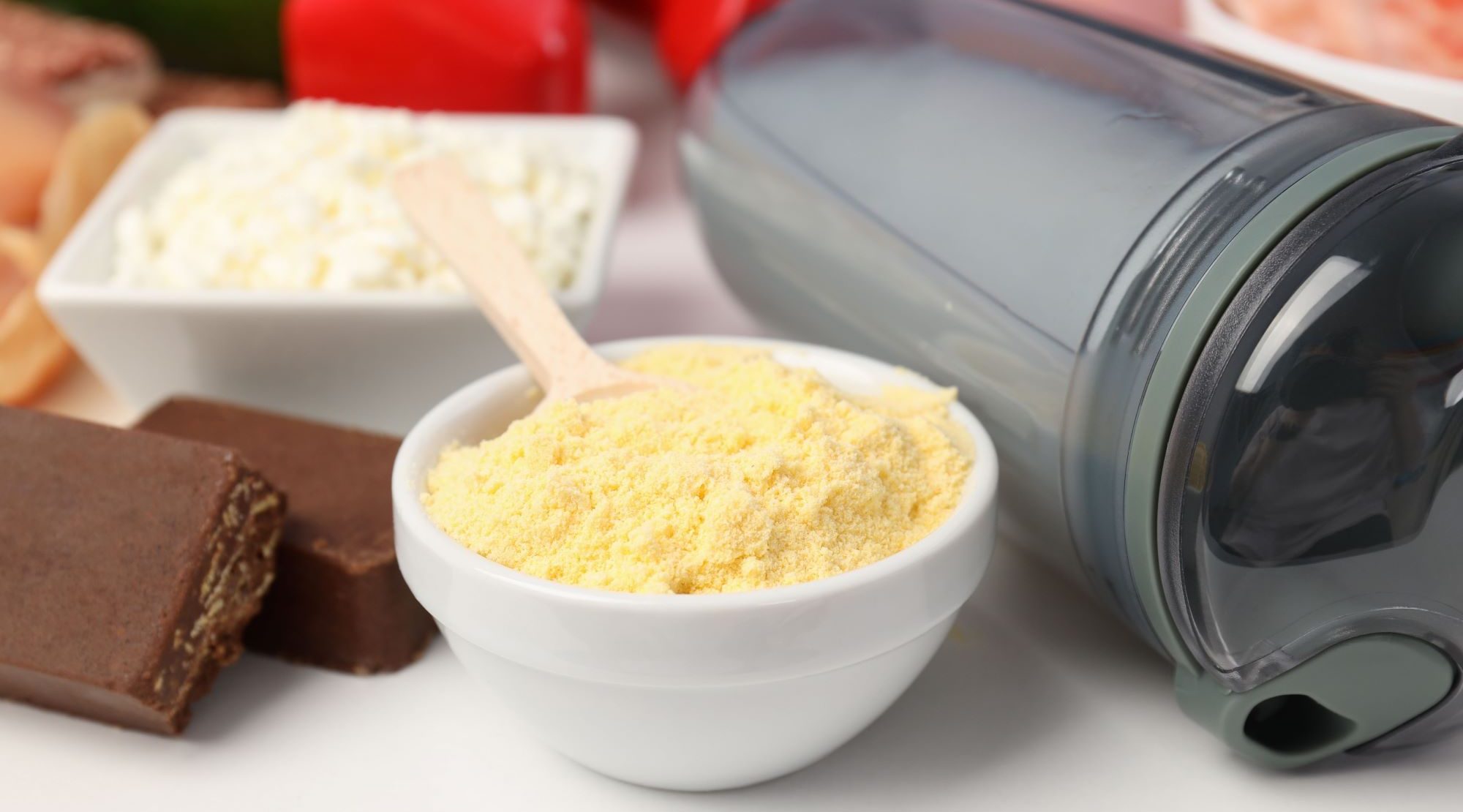Protein is an essential nutrient, and the World Health Organization (WHO) has recommended an international dietary intake of 0.8 g/kg/day1. Protein is vital for its ability to assist in weight management, increase high-density lipoprotein (HDL) cholesterol, increase thermogenesis and satiety, and enhance bone mineralization1.
Access to sufficient food of adequate quality to maintain normal body composition and function throughout the life cycle is fundamental to maintaining good health. The intake of protein is essential for achieving the desired structure and function of the body and is defined as a requirement for a nutritionally adequate diet.
Animal vs Plant: Assessment
Proteins are found in both animal and plant foods. An assessment to identify which dietary protein sources is the best supplier of proteins needs to take account the total amount of protein, the content of essential amino acids and its digestibility8.
There are a few methods for evaluating protein quality that have been developed over the years. The Protein Digestibility Corrected Amino Acid Score (PDCAAS) was developed in 1989 by a Joint FAO/WHO Expert Consultation on Protein Quality Evaluation3. In 2011, the FAO introduced an updated amino acid scoring system, the Digestible Indispensable Amino Acid Score (DIAAS)5.
The nutritional quality of protein in selected animal and plant sources is assessed using the PDCAAS, BV, NPU, and protein digestibility. The PDCAAS determines the protein quality by its potential to meet the amino acid requirements of the human body. BV indicates the portion of absorbed amino acids from a food source that is incorporated in the protein of the organism’s body. NPU is the proportion of the mass of amino acids converted to proteins to the mass of amino acids supplied5.
Animal-based proteins are more highly digestible than raw plant proteins. The low PDCAAS of plant proteins could result from lower digestibility and the absence of specific essential amino acids. Animal-based protein sources, such as milk, whey, eggs, beef, and chicken, have PDCAAS at or very near 1.00 and are considered complete protein sources for supporting indispensable amino acid requirements for human growth and development. Soy protein isolate (1.00) and soy flour (0.93) have strong PDCAAS for plant proteins5. Plant proteins’ limitation is due to insufficient levels of one or more indispensable amino acids. For example, legumes are low in the sulphur-containing amino acids methionine and cysteine, while lysine is typically limiting in grains.
Whey vs Plant Proteins
Whey protein is animal-based and is made by separating the protein from the casein in milk or as a by-product in cheese making. It is normally used as a supplement by athletes who are undertaking resistance training to boost muscle protein synthesis and lean muscle growth. Whey protein is considered a high-quality protein as it contains all 9 essential amino acids as illustrated in Table 3.
Table 3: Essential Amino Acids in Whey versus Plant Proteins6

Studies have shown that high-protein diets and certain amino acids are linked with successful weight loss and reduced risk factors for obesity and metabolic diseases9. But consuming high doses of whey protein may cause stomach pains, cramps, reduced appetite, nausea, headache, fatigue, and acne.
Since plant proteins are less calorie-dense than animal proteins, it is recommended that consuming more plant protein can help to provide higher indispensable amino acid intakes5. It used to be difficult for individuals to take in relatively large amounts of protein from whole plant foods due to the foods having low percentages of protein. Now it has become much easier for consumers to boost their intake of plant proteins via the availability of multiple plant-based protein supplements. The supplements which contain 80% or more protein by weight allow consumers to take 10–20 g or more of plant-based protein per serving.
While the PDCAAS of an individual protein is critical in determining the quality of a sole-source protein, it becomes less significant when the diet contains proteins from many sources. For example, lysine is often limiting in grain proteins, but rich in sulphur-containing amino acids. But legumes are rich sources of lysine but are limiting in sulphur-containing amino acids. Consumption of these two protein sources will “complement” each other, helping to meet requirements for both types of indispensable amino acids3.
Future Trends
Today, the consumer demand for protein supplements is not confined to athletes per se but is now spurred by recreational sportspeople and lifestyle consumers. Increasing health consciousness, the need for a balanced diet, and the drive for weight control have led consumers to complement their diet with protein supplements and for example. Hence the projected value of the global protein supplements market is expected to reach €19.1 billion by 20254.
It is estimated that the plant-based sources of protein have dominated the supply of proteins throughout the world (57%), with the remaining 43% consisting of dairy products (10%), shellfish and fish (6%), meat (18%), and other products from animals (9%)9. What the consumers wants more animal-free protein that provides an assurance of protein quality, nutrient profile, ingredients used and sustainability production of the plant protein. At DPO International, we offer a diverse selection of ingredients that can boost protein content and help your food business create a winning product.
References
1. Ahnen, R. T., Jonnalagadda, S. S., & Slavin, J. L. (2019). Role of plant protein in nutrition, wellness, and health. Nutrition Reviews, 77(11), 735–747. https://doi.org/10.1093/nutrit/nuz028
2. Cintineo, H. P., Arent, M. A., Antonio, J., & Arent, S. M. (2018). Effects of Protein Supplementation on Performance and Recovery in Resistance and Endurance Training. Frontiers in Nutrition, 5. https://doi.org/10.3389/fnut.2018.00083
3. Hertzler, S. R., Lieblein-Boff, J. C., Weiler, M., & Allgeier, C. (2020). Plant Proteins: Assessing Their Nutritional Quality and Effects on Health and Physical Function. Nutrients, 12(12), 3704. https://doi.org/10.3390/nu12123704
4. Kårlund, A., Gómez-Gallego, C., Turpeinen, A. M., Palo-oja, O.-M., El-Nezami, H., & Kolehmainen, M. (2019). Protein Supplements and Their Relation with Nutrition, Microbiota Composition and Health: Is More Protein Always Better for Sportspeople? Nutrients, 11(4), 829. https://doi.org/10.3390/nu11040829
5. Kumar, M., Tomar, M., Punia, S., Dhakane-Lad, J., Dhumal, S., Changan, S., Singh, S. (2022). Plant-based proteins and their multifaceted industrial applications. LWT, 154, 112620. https://doi.org/10.1016/j.lwt.2021.112620
6. Langyan, S., Yadava, P., Khan, F. N., Dar, Z. A., Singh, R., & Kumar, A. (2022). Sustaining Protein Nutrition Through Plant-Based Foods. Frontiers in Nutrition, 8. https://doi.org/10.3389/fnut.2021.772573
7. Mellentin, J. (2022). 10 Jey Trends in Food, Nutrition & Health 2023. Vol. 28, No. 2/3, New Nutrition Business. ISSN 978-1-906297-65-7.
8.Nutrient Reference Values for Australia and New Zealand Including Recommended Dietary Intakes | NHMRC. (2006, September 22). Retrieved April 11, 2023, from Nhmrc.gov.au website: https://www.nhmrc.gov.au/about-us/publications/nutrient-reference-values-australia-and-new-zealand-including-recommended-dietary-intakes#block-views-block-file-%20attachments-content-block-1.
9. Reid-McCann, R. J., Brennan, S. F., McKinley, M. C., & McEvoy, C. T. (2022). The effect of animal versus plant protein on muscle mass, muscle strength, physical performance and sarcopenia in adults: protocol for a systematic review. Systematic Reviews, 11(1). https://doi.org/10.1186/s13643-022-01951-2






